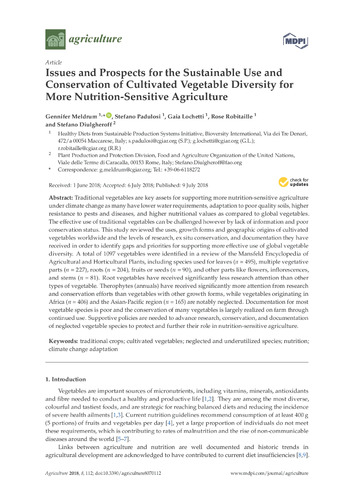Issues and prospects for the sustainable use and conservation of cultivated vegetable diversity for more nutrition-sensitive agriculture
Traditional vegetables are key assets for supporting more nutrition-sensitive agriculture under climate change as many have lower water requirements, adaptation to poor quality soils, higher resistance to pests and diseases, and higher nutritional values as compared to global vegetables. The effective use of traditional vegetables can be challenged however by lack of information and poor conservation status. This study reviewed the uses, growth forms and geographic origins of cultivated vegetables worldwide and the levels of research, ex situ conservation, and documentation they have received in order to identify gaps and priorities for supporting more effective use of global vegetable diversity. A total of 1097 vegetables were identified in a review of the Mansfeld Encyclopedia of Agricultural and Horticultural Plants, including species used for leaves (n = 495), multiple vegetative parts (n = 227), roots (n = 204), fruits or seeds (n = 90), and other parts like flowers, inflorescences, and stems (n = 81). Root vegetables have received significantly less research attention than other types of vegetable. Therophytes (annuals) have received significantly more attention from research and conservation efforts than vegetables with other growth forms, while vegetables originating in Africa (n = 406) and the Asian-Pacific region (n = 165) are notably neglected. Documentation for most vegetable species is poor and the conservation of many vegetables is largely realized on farm through continued use. Supportive policies are needed to advance research, conservation, and documentation of neglected vegetable species to protect and further their role in nutrition-sensitive agriculture.

